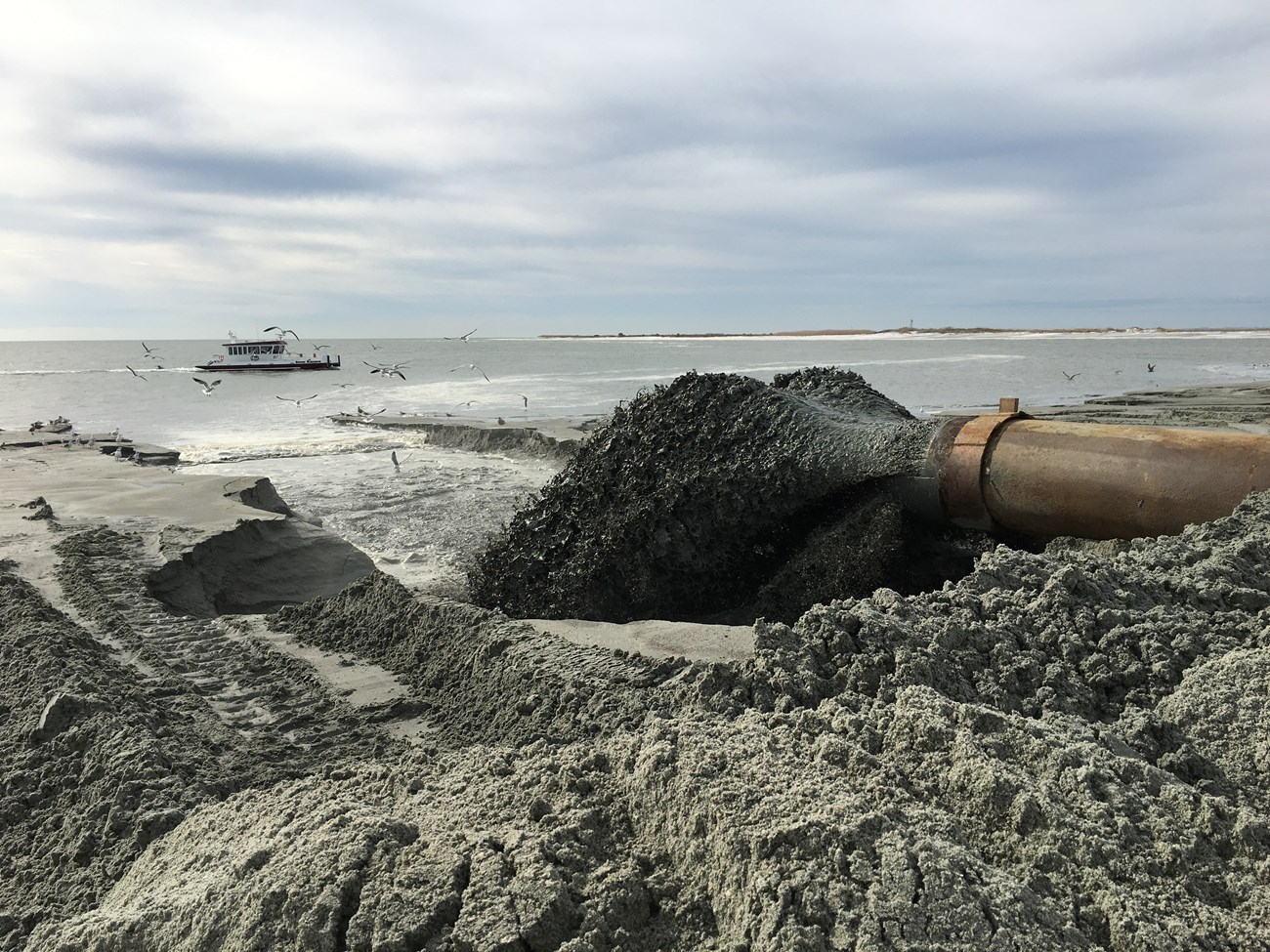Part of a series of articles titled Coastal Engineering—Soft Structures.
Previous: Beach Nourishment
Next: Beach Scraping
Article

NPS photo by Linda York.
Dredging is the removal of material, including sand, silt, gravel and other subaqueous materials from waterways. It is often used to keep waterways and ports navigable for both recreational and commercial users. Dredging armored inlets is an unending task. By removing sediment from the naturally accreting area, new sediment transported into the waterway will fill in its place, limiting supply down the coast. Historically most dredged material was placed offshore as the most cost effective option, removing it entirely from the active sediment system and contributing to long-term shoreline erosion. Keeping dredged material within the active sediment system, particularly by dumping in areas needing beach nourishment, helps to counteract erosion associated with hard engineering structures such as jetties and groins.
Commonly, dredging is completely solely for the purpose of beach nourishment projects such as the case for Ship Island, Gulf Islands National Seashore. The barrier island that protects historic Fort Massachusetts had been divided by Hurricane Camille in 1969 and the new inlet was significantly widened during Hurricane Katrina in 2005. The new 2.4 mile wide inlet between East and West Ship Islands, known as Camille Cut, is estimated to require approximately 13.5 million yd3 (10.3 million m3) of sediment to fill in. Redistributing sediment and modifying the submerged landscape may have its negative effects on surrounding resources. The sediment grain size of dredged materials may not be compatible with native beach sediment when nourishing. Grain-size alterations and contamination may exceed flora and fauna tolerances, negatively impacting native ecosystem functions. Dredge “borrow sites” located too close to the shoreline may increase rates of erosion or alter wave patterns at adjacent beaches, further driving geomorphic change of native habitat. Additionally, benthic communities living at the borrow sites are disrupted during the dredging process and may take several years to re-establish back to their pre-dredged levels.
Part of a series of articles titled Coastal Engineering—Soft Structures.
Previous: Beach Nourishment
Next: Beach Scraping
Last updated: April 8, 2019